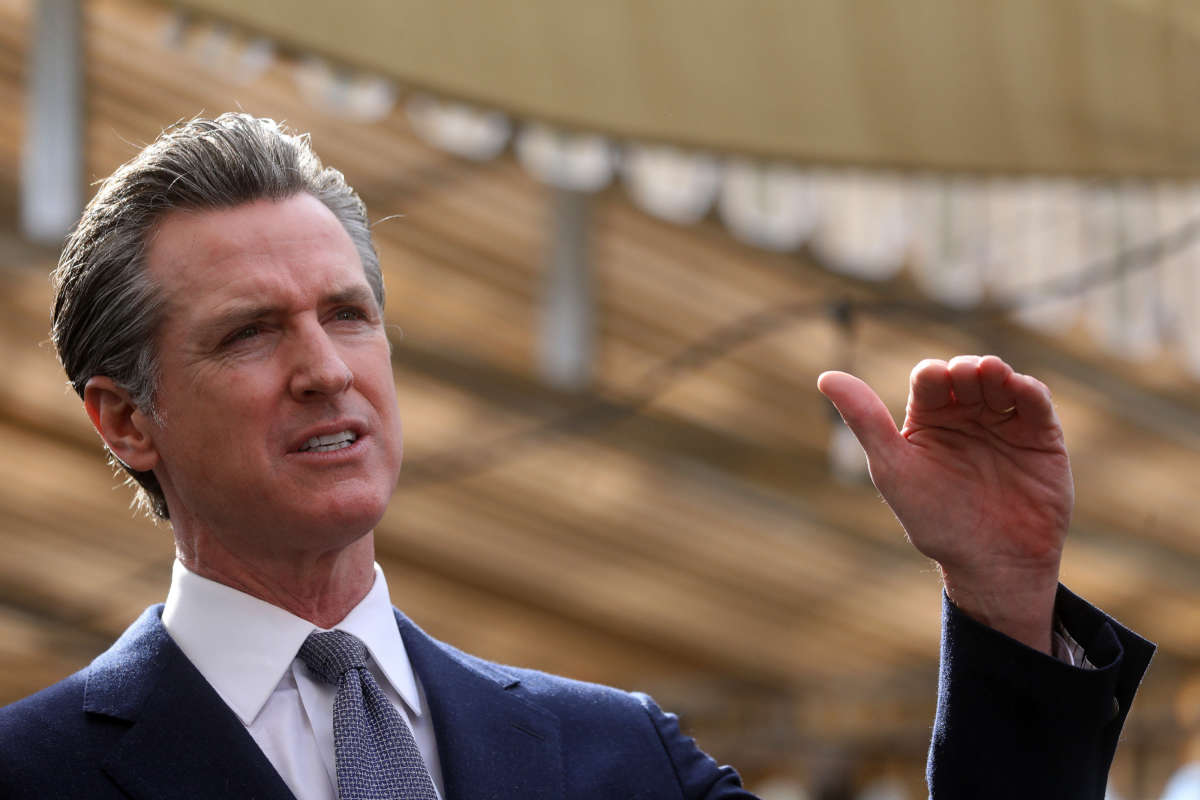Gov. Gavin Newsom announced on Thursday that California is going to begin making its own insulin, in an effort to expand access and ensure that the people who need the drug can still afford it.
“California is going to make its own insulin. Nothing, nothing epitomizes market failures more than the cost of insulin,” Newsom said in his announcement, adding that some patients have to spend $300 to $500 per vial, which typically only last a patient about 30 days.
The state will allocate $100 million to produce the drug “at a cheaper price, close to at cost, and to make it available to all,” he said. Half of the money will go toward opening and staffing a manufacturing facility in the state and the other will cover costs of developing the product. Newsom has also been working on plans to potentially lower prices of other prescription drugs in the state.
“In California, we know people should not go into debt to receive life-saving medication,” Newsom said. The governor’s office says that the plan will cut the cost of insulin in half, if not more.
People in the U.S. pay more for insulin than people in any other wealthy country — often paying between 5 to 10 times more than what people in other countries do, research has found. With such high costs for common types of insulin, some people with diabetes have been organizing caravans to travel to Canada in order to obtain the medication for a fraction of the cost.
A recent survey by CharityRx found that a whopping four out of five patients have taken on credit card debt in order to afford insulin, taking on an average of $9,000 per patient. Additionally, 83 percent of respondents said they’ve feared not being able to pay for basic necessities like clothes, food and rent due to the cost of their insulin.
The high costs of insulin have had dangerous consequences. Yale University researchers found that one in four diabetes patients who visited the Yale Diabetes Center in 2017 said that they were skipping or skimping on doses of insulin because of the cost of the drug — which led to poorer health outcomes for those patients. Further, about a third of these patients didn’t discuss their underuse of the drug, which could have caused additional health problems.
CharityRx’s findings were even more drastic. The survey found that 38 percent of respondents said that they have had to stay at the hospital for more than a day due to problems caused by insulin rationing, while 33 percent said that rationing has caused them to get sick with other health issues.
Likely partially a result of high insulin prices, diabetes is a leading cause of death in the U.S. In both 2020 and 2021, over 100,000 Americans died due to diabetes, and the illness was the seventh highest cause of death in 2019. Meanwhile, the average price of insulin increased 11 percent every year between 2001 and 2011, research has found, making the condition the most costly chronic condition in the U.S., according to American Action Forum; in the U.S., one in four dollars spent on health care is spent on people with diabetes.
Democrats in Congress have been pushing to lower the cost of insulin. In March, the House passed a bill that would place a cap on prices of insulin to $35 a month or 25 percent of insurance plans’ prices, whichever is lower.
Over the past year, Democrats have also been working on plans to lower drug prices in general. Senate Majority Leader Chuck Schumer (D-New York) released a plan this week that would allow Medicare to negotiate drug prices for the most expensive drugs, though the plan excludes the insulin price cap, unlike the drug price negotiation plan introduced by House Democrats last year.
Our most important fundraising appeal of the year
December is the most critical time of year for Truthout, because our nonprofit news is funded almost entirely by individual donations from readers like you. So before you navigate away, we ask that you take just a second to support Truthout with a tax-deductible donation.
This year is a little different. We are up against a far-reaching, wide-scale attack on press freedom coming from the Trump administration. 2025 was a year of frightening censorship, news industry corporate consolidation, and worsening financial conditions for progressive nonprofits across the board.
We can only resist Trump’s agenda by cultivating a strong base of support. The right-wing mediasphere is funded comfortably by billionaire owners and venture capitalist philanthropists. At Truthout, we have you.
We’ve set an ambitious target for our year-end campaign — a goal of $250,000 to keep up our fight against authoritarianism in 2026. Please take a meaningful action in this fight: make a one-time or monthly donation to Truthout before December 31. If you have the means, please dig deep.
